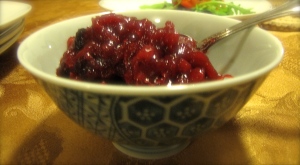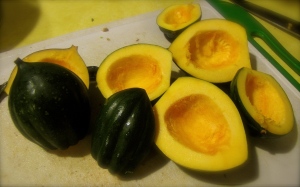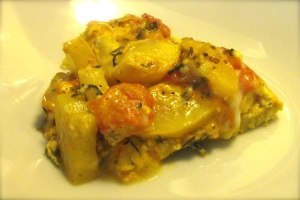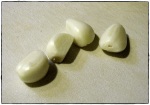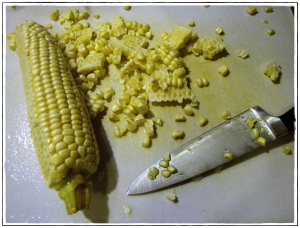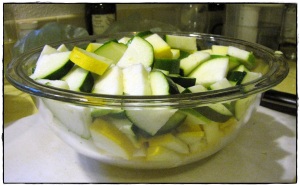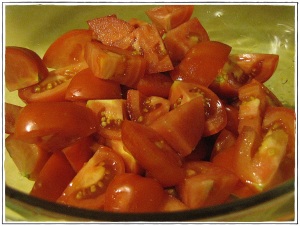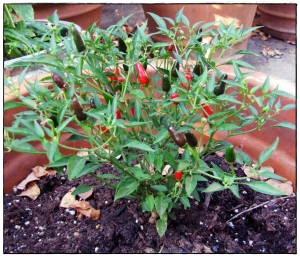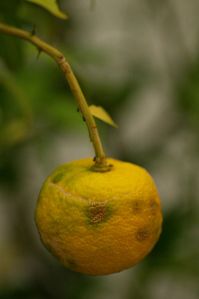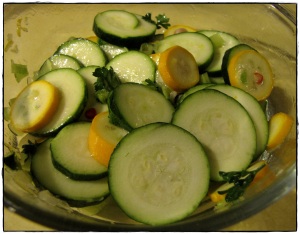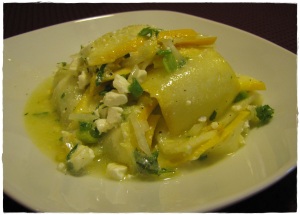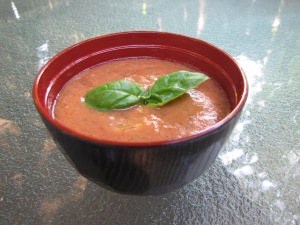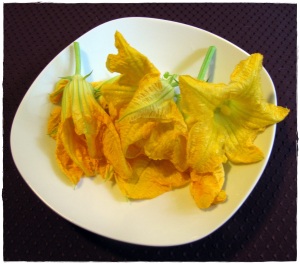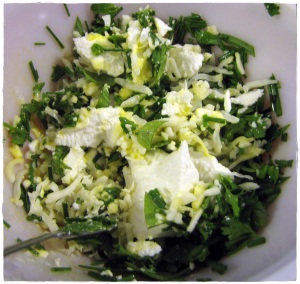Well, it’s the day after Thanksgiving and I am happily stuffed after revisiting some of yesterday’s leftovers for breakfast this morning. I’m at home visiting my parents in Washington State, and I’m happy to say that our Thanksgiving meal was seasonal, local (with pumpkin, squash, carrots, and herbs from our garden), and totally vegetarian!
My family has been pescatarian for years, and I don’t even remember the last time we attempted to have a turkey for Thanksgiving. Though stuffing a turkey for this holiday has become an American tradition, our family has found alternative, more sustainable, turkey-friendly, and equally enjoyable ways to celebrate. We still stick to the classics for our sides–cranberry sauce, mashed potatoes and veggie gravy, brussel sprouts or green beans, corn, sweet yams–these are all very easy to make vegetarian. But for the main event, rather than stuffing a turkey, we stuff a pumpkin from our garden. Some years, we use a regular bread crumb stuffing, while other years, we switch to wild rice for a local twist. Either version gives us the satisfaction of the Thanksgiving stuffing tradition, without the added cruelty. And let’s be honest, the more well-known veggie alternative, Tofurkey, is not that satisfying or healthy.
I know it’s a bit late for recipes, but I thought I’d at least share this year’s menu with everyone, with hopes of giving other veggies some inspiration around this time of year. And as a bonus, this menu is almost entirely gluten free.
A Vegetarian Thanksgiving Menu
Appetizer
- Goat cheese torte with pesto and sun dried tomatoes
Sides
- Simple green salad with cranberry gorgonzola dressing
- Organic homemade cranberry sauce with ginger and hot chillies
- Mashed potatoes with homemade veggie gravy
- Roasted green beans with red onion
- Caramelized mushrooms and onion in a rich butter-wine sauce
- Sweet yams with maple syrup and spices
The Main
- Individual acorn squash cups stuffed with wild rice and herbs
Dessert
- Pumpkin pie with bourbon whipped cream
Drinks
- Local sparking and red wine, as needed ;)
The only dish that wasn’t homemade this year was our appetizer, a goat cheese torte from Trader Joe’s. We served this with rice crackers and sparkling wine from the Mountain Dome Winery, my favorite local winery for the sparkles.
A simple side salad with organic baby greens, tomatoes, and green onions, topped with a gorgonzola cranberry dressing from Trader Joe’s, gave the meal a bit of freshness.
The green beans were supposed to be roasted in bundles with kitchen twine, though we later realized we had the wrong kind of twine and cut if off before actually roasting these beautiful bundles.
Homemade gravy with olive oil, flour, and veggie bouillon–delicious and vegan!
Dad bought organic cranberries and spiked them with ginger and Thai chili peppers from our garden–amazing. I’ll never serve canned again!
This year, we decided to use acorn squash rather than pumpkin for our main event. After a bit of an odd growing season, my parents ended up with several extra small but still delicious acorn squash from their garden, perfect for individual servings.
Thanks to their new green house, we were able to season the wild rice stuffing with herbs and carrots from the garden, as well.
All together, it was a wonderful, healthy, local, vegetarian feast!
I can’t believe I forgot to take a picture of the pumpkin pie (made with a garden pumpkin) with bourbon-agave whipped cream! It was delicious, and I must have been a bit too excited to eat it . . .
I hope these menu ideas help, and if anyone is in desperate need of a recipe, let me know! I’m happy to help.




